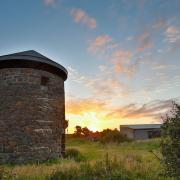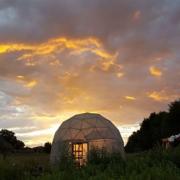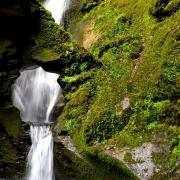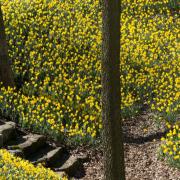Julie Newman's evocative account of beautiful and diverse Bodmin Moor
BODMIN MOOR By Julie Newman
Being regular visitors to Devon and Cornwall for over twenty years, my husband and I thought we knew most of the west country quite well. Renting a cottage in a different area every year we always enjoyed exploring the old fishing villages, harbours and countryside.
While staying in Cardinham one year I wanted to explore Bodmin moor. My husband felt it was unlike Dartmoor, which we knew well, and possibly not accessible to motorists. I found this hard to believe, so one afternoon I persuaded him to investigate.
The clouds gathered as we left the holiday cottage. We ended up driving around in the rain, not knowing where we were going until he became disenchanted with the place and drove back to the cottage. I was disappointed. He, however, was determined not to go back that year and Bodmin moor was forgotten.
Until three years later.
My husband had always wanted to live in the west country and with premature retirement forced upon him we started in earnest to look for a suitable property. After much searching on the internet, we found a bungalow in a village called Rilla Mill, little realising it was on the edge of Bodmin moor. We uprooted ourselves from the flat landscape of the Cambridgeshire fens to embark on a new life in the parts of south east Cornwall where we had never ventured.
We soon realised that the area had a lot to offer with many woodland walks from our front door. The hedgerows are full of wild flowers in spring and early summer and at every farm gate there is a new vista. It has a fairytale quality about it with many of the trees and undergrowth covered in moss and lichen; a bridge over the river Lynher, made from a fallen tree, even has an inscription - ‘Beware of the Troll’! The views from our garden are spectacular; in one direction the hilly landscape drifting down to the Lynher valley with patchwork fields in the distance, and in the other, the stark contrast of Caradon hill. A haven for wildlife, buzzards can often be seen circling overhead.
A short drive takes us to the wild beauty of Bodmin moor and a little village called Minions. Here, commoners graze their nomadic sheep, cattle and ponies as they have for centuries. I love the quirky way the sheep plonk themselves in the middle of the road with no regard for the motorist! The animals have the whole moor to graze in but frequently feed at the edge of the road.
There is a romantic atmosphere with evidence of the ancients inhabiting the moor; The Hurlers is one of three remaining stone circles dating from about 1800 BC and reminds us of the pagan rituals whose understanding has been lost in the mists of time. Legend has it that St Cleer was angered by local men playing hurling on a Sunday – they refused his demands that they desist hurling and go to church, so he turned them to stone so they would forever play hurling on the moor! The Cheeswring, a series of giant granite boulders that look as though they could topple in a gust of wind, perch high on the landscape. Although they are formed by natural erosion, Cornish folklore blames the giants for their existence.
More recently, the moorland is scarred with the remains of the mining industry of the mid nineteenth century. At the height of the copper boom, fifty beam engines were at work around Minions and rows of cottages were built to house the miners and their families. It was a hard life; thousands of men went below while women and children worked the dressing floors, extracting the ore from the rocks. Life expectancy fell to 22; accidents accounted for some of the deaths but contagious diseases and malnutrition were the biggest killers. The Cheesewring quarry opened and the Liskeard and Caradon railway was built to link the industrial site with the sea at Looe. Visitors can now walk part of this disused track and if they are feeling energetic there is one that circles Caradon hill.
It is difficult to imagine the level of noise created by the industry in that bygone era; in 1914 the Phoenix United Mine finally closed and the moor fell silent once again. It can be a very lonely place and also very eerie when the mist descends making the moorland difficult to navigate. The weather can change rapidly in this area – bright blue sky one minute and the next, overcast with rain spreading from the west. This is a characteristic one either gets used to or constantly complains about but Bodmin moor is a special place and I am glad to have found it.


























